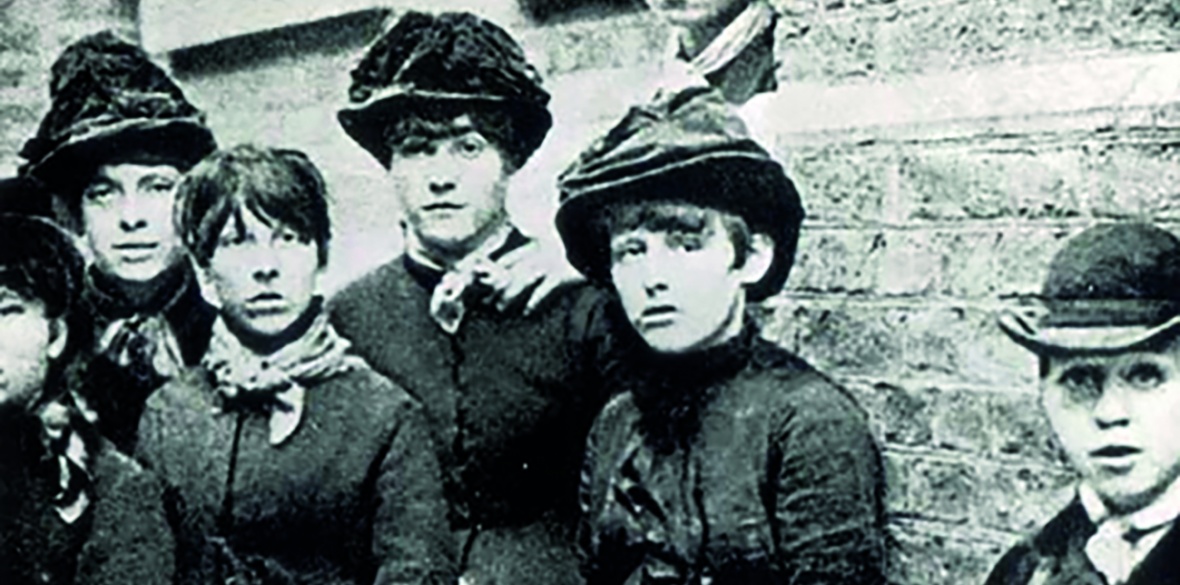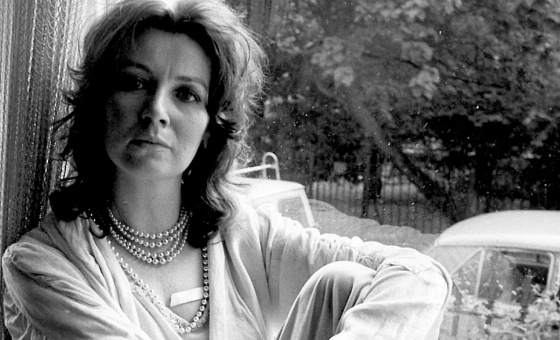This is the last article you can read this month
You can read more article this month
You can read more articles this month
Sorry your limit is up for this month
Reset on:
Please help support the Morning Star by subscribing here
AFTER 134 years, an English Heritage blue plaque will at last mark the site of a groundbreaking strike by east London matchwomen.
I’ve spent a little less than that, but still almost half my life, learning and telling their story — pursuing women I could never meet, but who still changed my life, through the pages of history, and East End memory.
It started with a chance discovery in an archive in 1997.
I was a trade union steward researching an essay for a labour history course; I’d left school at 15 and knew shockingly little about working-class history (we “did” kings and queens — the rest of the population made only rare appearances, invariably either rioting or dying of one plague or another).
And how I sweated that first essay: I didn’t know how to write it, though I did know who I wanted to write about: the only women we’d really covered, the “matchgirls.”
We’d learned that their strike in 1888 was mainly noteworthy as a small harbinger of greater things to come.
From 1889, hundreds of thousands of working-class people began taking strike action to force employers to let them unionise.
This became known as New Unionism, and was a stepping stone to the foundation of the Labour Party.
New Unionism was traditionally dated from 1889, not 1888. The matchwomen’s strike was judged too “minor” to have influenced the men who later took action; and was also supposed to have been orchestrated not by workers themselves but by Annie Besant, “celebrity socialist” and middle-class activist — definitely not a matchwoman.
This made the matchwomen little more than puppets, taking their agency from them.
Having been on strike with women from East End families myself, admittedly a century later, this didn’t make sense to me — how, and why, did Besant persuade them to do it?
They were wholly dependent on their wages and had no savings; having no union, they’d get no strike pay. And the Fabian Society, of which Besant was a key member, were hardly syndicalists.
History books hadn’t helped me solve the conundrum: the strike was usually dealt with in a few lines, and sometimes not mentioned at all, in books on New Unionism.
It simply seemed to have been accepted that Besant had “made” them strike for vague political motivations.
Determined to crack the case, one lunchbreak I went down to the Rose Lipman library in Hackney, which held the Bryant & May company archives.
Embarrassed to admit I didn’t have a clue how to use an archive, I dived into the documents — then all over the place chronologically, just as they had been when the old factory became a gated community and the company papers were dumped at the library.
Two crucial documents leapt out at me. First, a foreman’s list of suspected “ringleaders” of the strike — five women inside the factory.
The second was a copy of Besant’s own political paper the Link, in which she’d printed a blistering exposé of the women’s terrible working conditions: “phossy jaw,” the potentially fatal necrosis caused by white phosphorus; starvation wages, illegal random fines; violence from foremen.
History usually quotes this piece, “White Slavery in London,” and considers it case closed for a Besant-led strike; but I kept turning the pages.
Later in the same issue, I found Besant rubbished the idea that workers like the matchwomen could, or even should, take strike action — they’d just be sacked, she said; trade unionism might “brighten the lives” of poor women a little, she thought, but overall was only for the better-educated skilled worker.
Alarm bells couldn’t have rung louder — these weren’t the words of a woman preparing to lead a strike. I started digging deeper, and discovered Besant hadn’t known the strike had begun, and immediately urged the women back to work when she did.
The East End dockers who began the 1889 strike, on the other hand, were hugely impressed. They’d invited the matchwomen to address them after — against all the odds — the women won, returning to work the victorious members of the brand new Union of Women Matchmakers; the largest union of women and girls in the country.
During the Great Dock Strike, leaders constantly invoked the matchwomen’s example: “Remember the matchgirls, who won their fight and formed a union.”
It began to dawn on me what this meant. If the matchwomen had essentially begun New Unionism, they were the mothers of a movement supposed to be an essentially male one, to which women came late.
As a young trade unionist I’d been told by older, male stewards that women “shouldn’t really” be in the workplace taking men’s jobs, and that they were useless trade unionists, who didn’t attend the meetings (you’d often hear that these were at 3.30 in the local pub — this being school pick-up time didn’t seem to register). I knew it would have made a huge difference to me if I’d had examples like the matchwomen’s.
I began to trace their descendants — Joan Harris, Jim Best and Ted Lewis were matchwomen’s grandchildren who brought the women to life for me, not as oppressed waifs but a kind of cool girl gang, based on friendship and mutual respect. Matchwomen would literally “pass the hat” for workmates sacked or sick.
They also enjoyed life as much as humanly possible: matchwomen loved the music hall, and took pride in learning the words of new songs before anyone else, singing them as they walked home arm in arm from a rare night out (“A little wearying for the quiet loving citizen” sighed a middle-class local).
They knew that their supposed betters thought them the “lowest of the low,” but refused to be cowed: instead of shrinking into the shadows they developed distinctive fashions which were too loud, too bright and frankly too sexy for the middle classes (who were said to run inside when the women came off shift, rather than risk being subjected to “cheek” and bad language!)
Because they couldn’t afford to look up to the minute on their meagre wages, the matchwomen paid into “feather clubs” to buy communal hats, to be borrowed on high days and holidays.
I imagine they wore them in 1882 when Bryant & May unveiled a statue to William Gladstone on Bow Road. The women had been forced to contribute to its cost and attend the ceremony.
As the great and good assembled on Bow Road, they suddenly rushed at the statue, pricking their fingers with hatpins and dripping blood onto the stone, crying: “Our blood paid for this!”
That’s what you call a political gesture; and it’s still recalled today in the regular surreptitious painting of Gladstone’s hands bright red, by person or persons unknown.
What could I do to get the message out? I was lucky enough to have the help of my union to get onto an MA course and develop my research.
All this had an effect on my everyday life. Some local chaps were hostile to my career change. “You’re supposed to be a historian now? But you work in the pub.”
“Which man are you reading that book to impress?” one of my regulars asked once when I was studying.
It didn’t go down well at home either. Women developing independence can be seem like a threat to controlling and violent partners — and as soon as I started the course, occasional assaults by from the man I lived with became more constant and more serious.
He’d attack me without warning when I was sweating over that first essay, once throwing out on to the street in winter with no coat, keys, money or shoes when I was working to a deadline.
I remember always feeling tired, not just from combining work and study but from being attacked at night when I was asleep.
I discovered women like the matchworkers experienced domestic violence too — and stuck together through it, physically protecting each other when they could.
Then I found out one of the strike committee, Eliza Best, was believed by family to have killed herself to escape her violent husband.
That wouldn’t be me, I decided. I fixed two goals for myself — getting the matchwomen’s story out there to inspire other women, and escaping the violence, which would eventually escalate to an attack I barely survived.
I achieved both, in the end, and with just as much help from incredible women as the matchwomen gave one another.
MPs Lyn Brown and Diana Johnson and parliamentary worker and matchwoman descendant Kevin Morton helped get my work debated in Parliament — and Ted Lewis, who shared the life of his matchwoman grandmother Martha Robertson with me and became a good friend, was there to hear it.
“They said our grandmothers weren’t ladies — but they were to us,” he told me afterwards. “Great, East End ladies.”
Jeremy Corbyn would eventually acknowledge the women as the “mothers of our movement.”
Through Lyn Brown I met the marvellous Liz Aitken at Bow Quarter — today’s name for the original match factory, which has been turned into flats — and together we began the blue plaque application.
Liz and Sandra Docking at Bow Quarter pursued it tenaciously and finally, in November last year, I sat in the old factory with them, long-term resident and matchwomen fan Simon Smith, and Cathy Power and Rebecca Preston from English Heritage, to hear the decision — a blue plaque would be granted.
I will be celebrating with a gin or two when it’s unveiled in July, and look forward to taking descendants, students and friends over the next years to see this memorial to what a “powerless” group of women could achieve using their numbers, and the secret weapons the massed power of the Establishment couldn’t break — solidarity and sisterhood.
Louise Raw is the author of Striking a Light: The Bryant and May Matchwomen and their Place in History (Continuum).










